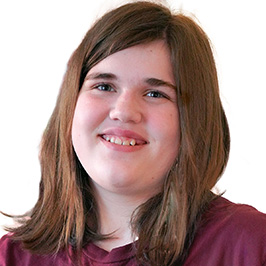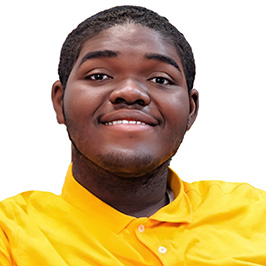What is autism and what are the characteristics associated with it?
Page 2: Characteristics of Autism
 As previously mentioned, autism is typified by a set of common characteristics (i.e., differences in social communication, social interaction, repetitive behavior, and restricted interests). For the purposes of diagnosing autism, these are combined into two general domains:
As previously mentioned, autism is typified by a set of common characteristics (i.e., differences in social communication, social interaction, repetitive behavior, and restricted interests). For the purposes of diagnosing autism, these are combined into two general domains:
- Differences in social communication and social interaction
- Restricted or repetitive patterns of behavior, interests, or activities
These characteristics can manifest in many different ways, as shown in the tables below.
| Differences in Social Communication and Social Interaction | |
| Characteristic | Examples |
| Challenges initiating and responding to social interactions |
|
| Difficulties engaging in back-and-forth conversation |
|
| Differences in using or understanding non-verbal communication |
|
| Challenges with developing and maintaining relationships |
|
| Restricted or Repetitive Patterns of Behavior, Interests, or Activities | |
| Characteristic | Examples |
| Repetitive movements with objects or body |
|
| Repetitive speech |
|
| Strong adherence to routines or rituals |
|
| Highly focused or intense interests |
|
| Atypical responses to sensory input
x
atypical responses to sensory input glossary |
|
It is important to remember that no single individual will exhibit every characteristic and the combination, intensity, and presentation of these traits will be unique to each person. Additionally, their support needs can range from fairly minimal to quite extensive. One student might be largely independent, only requiring occasional prompting or added structure in the classroom, while another might require continuous adult assistance with communication, learning tasks, and daily living activities. Furthermore, an individual will often exhibit significant differences in ability from one skill or area to another. For example, a student might display gifted abilities in mathematics yet struggle to communicate their basic wants and needs.
Research Shows
Many individuals with autism are also diagnosed with other conditions. A meta-analysis of more than 300 studies identified common co-occurrences and their prevalence rates among children and students with autism. These include:
- Dyspraxia – 87%
x
dyspraxia
glossary
- ADHD – 45%
- Anxiety – 42%
- Feeding or eating disorder – 42%
- Intellectual disability – 35%
- Sleep-wake disorder – 30%
x
sleep-wake disorder
glossary
- Depression – 14%
- Epilepsy – 13%
(Micai et al., 2023)
Evelyn, one of the students in the Challenge video, describes her experience with autism, anxiety, and ADHD.
There’s like three different little monsters in my head trying to be the driver’s seat of my brain. So, like I’ll be like really rigid one second and then the next second, like the rigid would be the autism just driving me around. But then anxiety would push autism out and make me really scared about everything. And then ADHD would go in, and I’d just be so distracted.
For Your Information
Currently, boys are three times more likely to be diagnosed with autism than girls. Although experts believe that autism is likely more prevalent in boys, the rates differ because girls are frequently misdiagnosed or have a delay in diagnosis. This is often due to different presentations of autistic characteristics. For example, autistic girls tend to have better social skills, exhibit fewer obvious repetitive behaviors, and have focused interests that are more socially acceptable (e.g., horses, celebrities) when compared to boys with autism. Additionally, girls are more likely to experience internalized challenges (e.g., anxiety, depression) rather than overt behaviors, which are more often exhibited by boys (e.g., hyperactivity, aggression).
To be diagnosed with autism, an individual must have exhibited some characteristics in early childhood, even if those traits were not recognized during that period. Young children with autism often exhibit differences in meeting developmental milestones, such as:
Did You Know?
Even though autism is something a person is born with, it is not always recognized at a young age. Sometimes, the signs of autism only become apparent when an individual faces the growing social demands that naturally come with getting older.
- By 9 months: Does not respond to name; does not show expected facial expressions (e.g., happy, angry, sad, surprised)
- By 12 months: Does not play simple interactive games (e.g., pat-a-cake); uses few or no gestures (e.g., waving goodbye)
- By 15 months: Does not share interests with others (e.g., showing someone an object they like)
- By 18 months: Does not point to show something interesting
- By 2 years: Does not seem to notice when others are hurt or upset
- By 3 years: Does not join other children in play
- By 4 years: Does not engage in pretend play
(US Centers for Disease Control and Prevention, 2024)
Activity
Review the videos below. Each pair contains one example of a young child engaged in behavior typical of their age and development and one of a child exhibiting characteristics of autism. For each pair of videos, compare and contrast the behavior of each child and identify the autistic characteristics that the second child is displaying.
Play |
|
|---|---|
|
Thirteen-month-old Kyle plays with a collection of colorful nesting cups. He plays with them as they were designed to be played with, stacking the smaller cups inside the larger ones. He passes cups back and forth with an observing adult, who prompts him to continue his play. |
In this video, seventeen-month-old Evan plays with a toy phone by tipping it over and throwing it. Even after an observing adult demonstrates how to use the toy as intended—pretending to answer a call for Evan and passing him the handset—he persists in his own style of play. |
Speech |
|
|
Two-year-old Alex is sitting in a high chair with a tray of food in front of him. An adult chats with him about his breakfast, and Alex responds as expected. The adult tells him, “So we’ll just wait until it gets nice and warm. But it’s a little bit hot, sweetie.” Alex replies, “It’s a little bit hot?” The conversation goes back and forth, with Alex following the adult’s train of thought each time and responding appropriately. |
An adult enters the room where two-and-a-half-year-old Lucas is playing. She says, “Hi, Lucas!” He repeats, “Hi, Lucas.” She says, “No. Say, ‘Hi, Georgia!’” He repeats, “Hi, Georgia.” Then she asks, “How are you?” He repeats, “How are you?” She prompts him once more, “Say, ‘I’m fine.’” He says, “I’m fine.” |
Response to Name |
|
|
Twelve-month-old Kyle is playing with toys on the floor. When an adult speaks his name, Kyle immediately turns toward her in recognition. He smiles and points before beginning to crawl toward the adult and the sound of her voice. |
Two adults try to get 19-month-old Evan to respond to his name. Even after they attempt to do so with added physical touches and tickling, Evan continues to shy away from eye contact with either of the adults and shows no signs of recognizing his name. |
Returning to the Challenge
The profiles below highlight some of the characteristics displayed by the autistic children featured in the Challenge video. Notice how each one exhibits unique differences in social communication and social interaction as well as restricted or repetitive patterns of behavior, interests, or activities.

Noah
Three year old
| Social Communication/Social Interaction | Restricted/Repetitive Patterns |
|
|

Rogan
Elementary school student
| Social Communication/Social Interaction | Restricted/Repetitive Patterns |
|
|

Evelyn
Middle school student
| Social Communication/Social Interaction | Restricted/Repetitive Patterns |
x
emotional dysregulation glossary |
|

Joseph
High school student
| Social Communication/Social Interaction | Restricted/Repetitive Patterns |
|
|
In this interview, Evelyn describes her autistic characteristics and the way autism shapes her experiences. Next, she explains how poetry became a powerful outlet for self-expression and shares her poem, “Autism.”

Evelyn
Middle school student
Autistic Characteristics and Experiences
(time: 2:37)
Self-Expression through Poetry
(time: 2:22)
Transcript: Evelyn
Autistic Characteristics and Experiences
I like it. It’s like a little superpower. Or I think of it like, like, some superheroes have their superpowers they’re really good at and then they all have, like, a setback—like, ummm, they might be, like, driven by donuts or something. And mine is, like, noise or like all my senses just feel, like, heightened. I like the sameness of every day, like knowing each class is 50 minutes long except for lunch, which is 30, and band, which is an hour. And I like knowing that it’s not gonna change, ever; the whole day’s gonna be the same length; and that the bells are gonna ring the same times each day.
It feels like the world’s ending, umm, when there’s a change. Like if I know there’s probably gonna be, like, a change and I’ll, like, that day pack the exact same lunch a few days in a row to, like, add some sameness to my day. Or I’ll wear my favorite outfit and don’t care what it looks like. Or I’ll spend, like, hours in, umm, learning about my special interest, watching people play random songs on their trumpet, or watching deadly shark attacks.
I don’t sit with anybody at lunch. I, like, sit by myself in the back. And, umm, I don’t really have any friends at school. All my friends go to my church and are in, like, ninth grade—like the whole youth group. But I’ve struggled with, like, making friends, pretty much since kindergarten. And I, like, don’t really understand how to be a friend, like what they want to talk about. Like, I spend most of the time just trying to, like, I made up myself a friend the other day. And I wrote down a bunch of facts about them. Or I’ll, like, make up my own friends that aren’t real and just create them for myself, which isn’t, like, as much fun as a real friend. And I know people are, like, something like opposites connect or something. But for me, it’s like I need to be the, like, pretty much the same to connect. I need someone to be interested in one of my special interests and to not care if I talk their ear off.
Transcript: Evelyn
Self-Expression through Poetry
So one day we didn’t have, uhh, we had a sub in ELA, and I really don’t like subs because I don’t like change. And we had the sub and she was, like—so in ELA all the lights are off, but we have, like, fairy lights and she had the fairy lights on, half of them were blinking, like, every millisecond, half of them were blinking every two seconds, and then the lights were on—so it was really crazy. And I was just angry. So I wrote a poem when I was finished with my work. And it wasn’t an angry poem. It was just how I felt. And then my librarian—who’s the best—found the poem, and she read it and she’s, like, she started crying. So I thought I did something really bad, like I thought I made her cry. I felt really bad about making her cry. And she’s like, “No, it’s happy tears.” So then she told me that I should start writing more poems. So every day I’d write, like, three poems and then go show ’em to her. She’d keep ’em in a stack. Then she told me to turn ’em in on Canva so I can, like, print them out and then the library’s gonna be able to check it out now.
This one it’s called “Autism” and it’s, like, I’ve heard a lot of people described as robots with autism. But for me, I’m like, like, umm I guess, a very creative robot then. But it says:
Autism
I have autism
I am not a robot
I have feelings
Lights hurt
Noise hurts
Please respect me
Do not laugh
Do not point
I have autism
and
I am not a robot
Like, we’re not all mathematicians who act like robots. We’re also, like, creative poets who find their joy from words and love words, like learning their meanings. And we’re not all the same. Like, some of us might be interested in sharks and some of us might be interested in pigs, but we’re not all people who could solve the Rubik’s cube in under 12 seconds or find out very hard calculations using mind power.
In this video, Joseph describes himself and his mom, LaTonya, explains some of his autistic characteristics (time: 1:47).
Transcript: Joseph and LaTonya
Mom: How would you describe yourself? Joseph is what?
Joseph: Smart.
Mom: Smart. What else?
Joseph: Kind.
Mom: Kind.
Joseph: You’re grateful.
Mom: You’re grateful.
Joseph: You wonderful.
Mom: You’re wonderful.
Joseph: Awesome.
Mom: And awesome. Good adjectives!
Joseph: You stupendous.
Mom: Stupendous. Alright, so that’s how he describes himself. Um, I would say Joseph is . . . he’s a hard worker. He starts a task—and I don’t know if it’s a pro or con—but he has to finish it before he can move on to something else. Sometimes it doesn’t quite work if you’re on, like, a time crunch and you’re like, “Hey, let’s go.” He wants to finish the task that he’s working on.
Um, he has great attention to detail. So before he left school today, his assistant principal was asking him, just naming off comedians, and he could name the movies that the comedian had been in. Um, he has a super large DVD collection at home. I thought, you know, when we clean up, we can just push them away. But he organizes them by production studio. It’s very different. So I think his attention to detail is one of his greatest assets.
He’s shown me, um, he’s very empathetic. Um, I think it comes from his attention to detail. So we could be across the mall and he could hear the cry of a baby from way far off, and he’s drawn into that. Whereas everyone else, because of the hustle and bustle of the day, we really don’t tune in to things that are not right up on us or are happening directly to us. He pays attention to what’s going on around him.